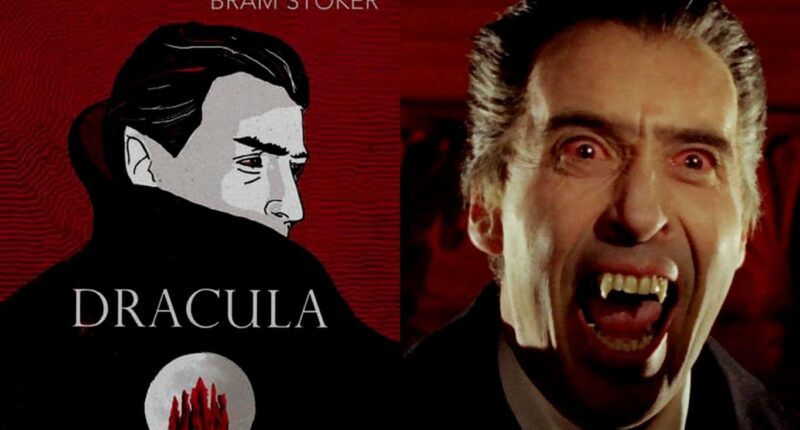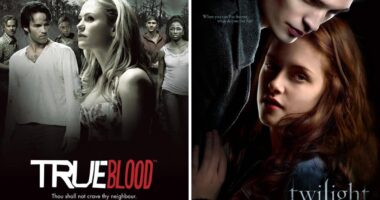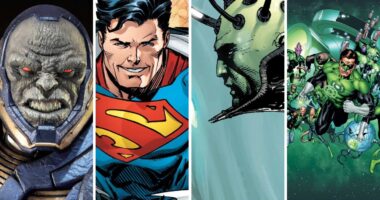Dracula in Bram Stoker’s Novel vs Pop Culture: Bram Stoker’s “Dracula” is a timeless classic that has captured the imagination of readers for over a century. The iconic novel has inspired countless adaptations in popular culture, ranging from movies to television shows, video games, and more. But how does Stoker’s original portrayal of the bloodthirsty count compare to his depictions in modern pop culture? Which version of Dracula is scarier? Today, we will explore the key differences between Dracula in Bram Stoker’s novel and his various adaptations, examining how each interpretation has evolved over time and how they have contributed to the lasting legacy of this legendary literary figure.
Bram Stoker’s Dracula
Bram Stoker’s “Dracula” is a gothic horror novel that was first published in 1897. The book tells the story of Count Dracula, a vampire from Transylvania, who travels to England with the intention of spreading his curse of the undead. The novel is narrated through a series of diary entries, letters, and newspaper clippings, which give the reader a sense of the fear and terror that Dracula’s presence has brought to the characters’ lives.

Stoker’s portrayal of Dracula is often cited as one of the most iconic and influential depictions of a vampire in literature. Dracula is depicted as a cunning and manipulative figure, who is able to shape-shift and control the minds of his victims. He is also portrayed as a darkly seductive figure, who preys upon the vulnerable and uses their desires against them. Stoker’s use of symbolism, such as the crucifix and garlic, adds to the sense of fear and dread that permeates the novel.
Despite being written over a century ago, “Dracula” remains a beloved classic of horror literature, and has inspired countless adaptations in popular culture. From movies to television shows, comics to video games, the legacy of Bram Stoker’s Dracula continues to haunt and terrify audiences to this day.
Dracula’s Depiction in The Pop Culture
The enduring popularity of Bram Stoker’s “Dracula” has led to numerous adaptations and reinterpretations of the iconic vampire in modern pop culture. While Stoker’s original novel laid the foundation for the portrayal of Dracula in popular media, subsequent adaptations have explored and expanded upon various aspects of the character, making him more complex, sympathetic, or terrifying, depending on the interpretation.
In many modern adaptations, Dracula is depicted as a more romantic and tragic figure, rather than the purely evil antagonist of the original novel. He is often portrayed as a sympathetic character, with a tragic backstory and motivations that are more nuanced than simply a desire to spread his curse. In popular culture, Dracula has been portrayed in a wide variety of forms, from Bela Lugosi’s iconic portrayal in the 1931 film, to Gary Oldman’s brooding interpretation in Francis Ford Coppola’s 1992 adaptation. He has also been depicted in animated shows like “Castlevania,” and as a teen heartthrob in the “Twilight” series.

In film, Dracula has been portrayed by numerous actors, including Bela Lugosi, Christopher Lee, and Gary Oldman. These performances have ranged from the more traditional and aristocratic portrayal of Dracula as a suave and sophisticated figure, to the more monstrous and animalistic depictions of the vampire as a bloodthirsty predator.
While in the television, Dracula has been the focus of numerous series, including “Buffy the Vampire Slayer,” “True Blood,” and “The Strain.” These interpretations have often explored the humanity of the character, delving into his backstory, motivations, and relationships with other characters.
And in literature, Dracula has been the subject of various retellings and reimaginings, ranging from romance novels to horror comics. These adaptations have often played with the traditional vampire tropes, adding new twists and subverting audience expectations.
The Transformation of Dracula Over The Years
Since Bram Stoker’s “Dracula” was first published in 1897, the character has undergone many transformations in popular culture. From classic horror films to modern-day TV shows, each adaptation has put its own spin on the iconic vampire. Here are some of the most significant ways that Dracula has changed over the years:

Physical Appearance: In Bram Stoker’s novel, Dracula is described as having sharp teeth, pointed ears, and a bushy mustache. However, in many of the subsequent adaptations, Dracula’s appearance has been modified to suit the times. In some adaptations, he is portrayed as a suave and sophisticated gentleman, while in others, he is depicted as a monstrous, feral creature.
Powers and Abilities: Stoker’s Dracula is able to shape-shift into a bat, a wolf, and even mist. He can also control the minds of his victims and move with superhuman speed and strength. However, in later adaptations, Dracula’s powers have been expanded to include other abilities such as flight and telekinesis.
Personality: Stoker’s Dracula is a cold, calculating figure who is motivated by a desire for power and control. However, in some adaptations, Dracula is portrayed as a sympathetic character who is cursed by his condition and longs for redemption.
Love Interests: While Stoker’s Dracula is depicted as having several female victims, he is not portrayed as having any romantic relationships. However, in some adaptations, Dracula is given a love interest, such as Mina Harker or Lucy Westenra.
Popularity: Despite being a major cultural figure for over a century, Dracula’s popularity has waxed and waned over time. In the 1930s, Universal Studios released a series of successful films featuring Bela Lugosi as Dracula, which helped to cement the character’s place in popular culture. In recent years, Dracula has enjoyed renewed popularity thanks to TV shows like “Buffy the Vampire Slayer” and “Dracula,” which have reimagined the character for modern audiences.
So Which is Scarier? Bram Stoker’s Dracula or The Modern Pop Culture Adaptations
Determining which version of Dracula is scarier, Bram Stoker’s novel or the modern pop culture adaptations, is subjective and largely depends on personal preferences. Some readers may find Stoker’s original portrayal of Dracula to be the scariest due to the novel’s use of symbolism and Gothic atmosphere, while others may find the more modern interpretations of the character to be scarier due to their use of special effects and more explicit violence.
Ultimately, the scariness of Dracula depends on the individual reader or viewer’s experience with the character. Each adaptation offers something unique, and the evolution of Dracula over the years shows the enduring appeal of the vampire as a symbol of fear and terror. Whether one finds Bram Stoker’s original version or a modern interpretation to be the scariest, it is clear that Dracula remains an iconic figure in horror literature and popular culture, with a legacy that is sure to endure for many years to come.
Also Read: Most Anticipated Horror Novels of February 2023



